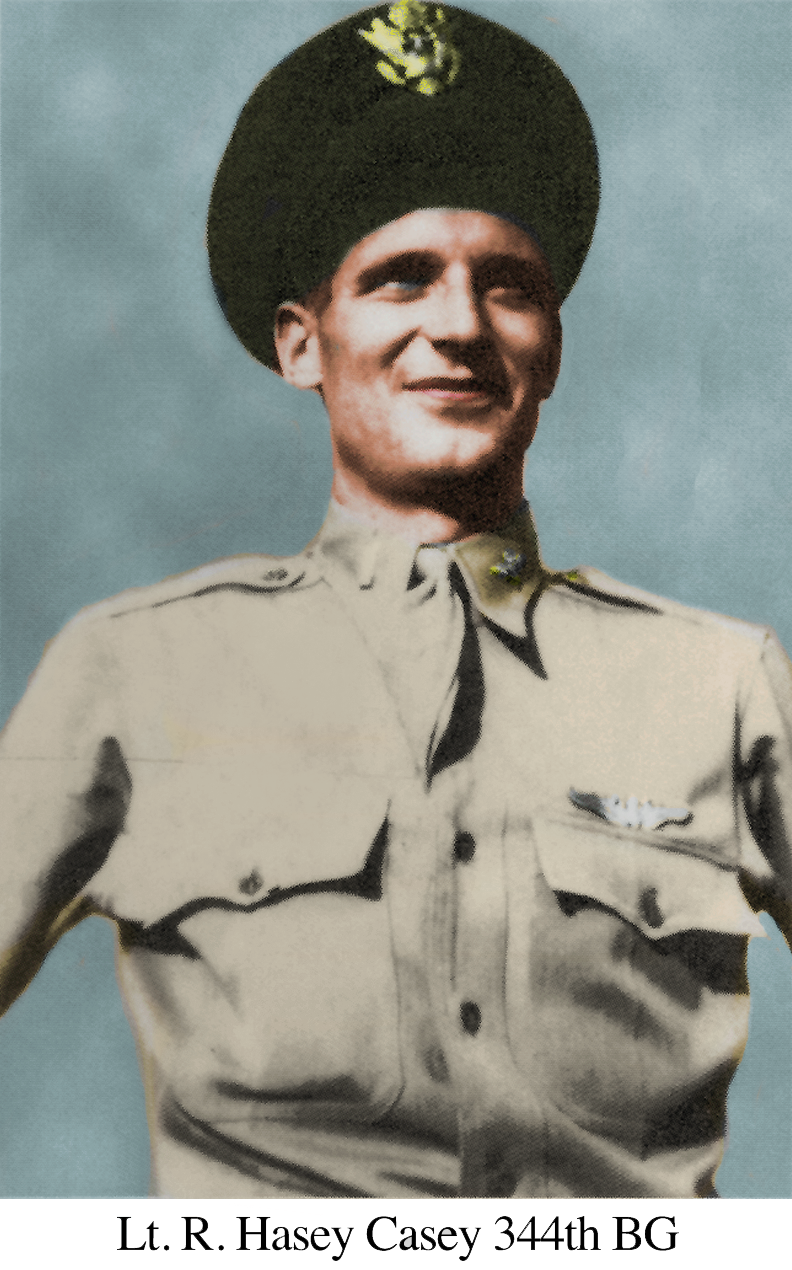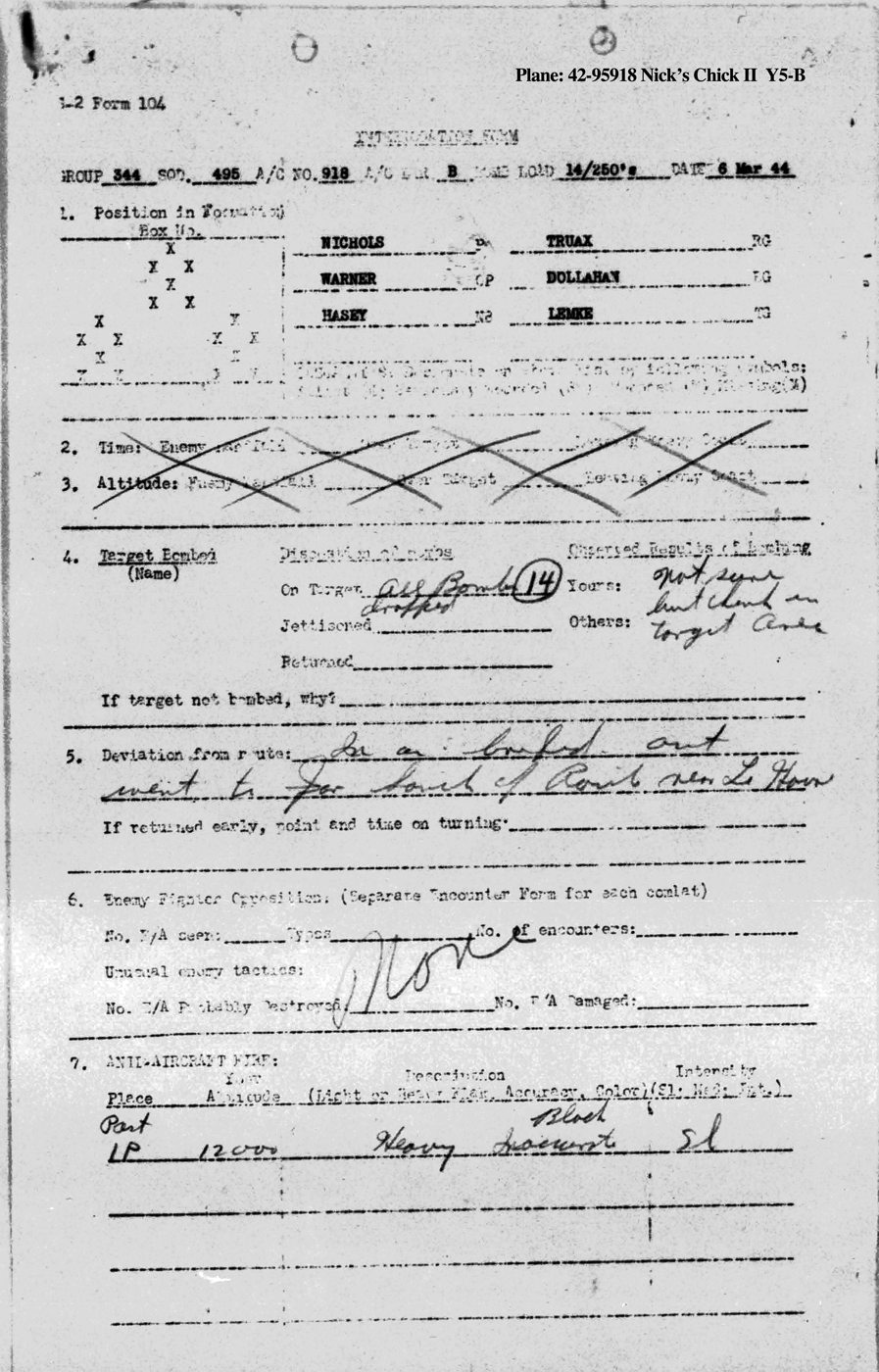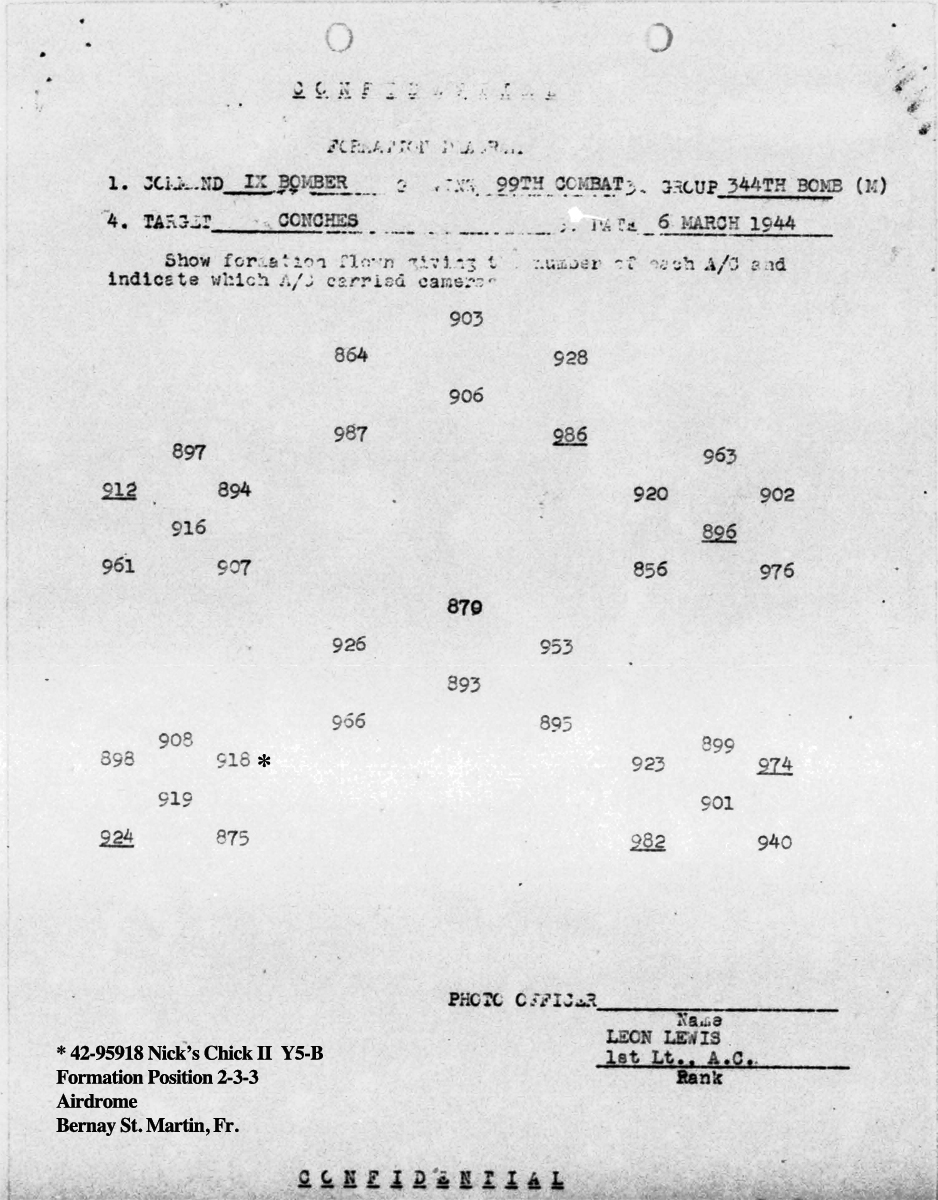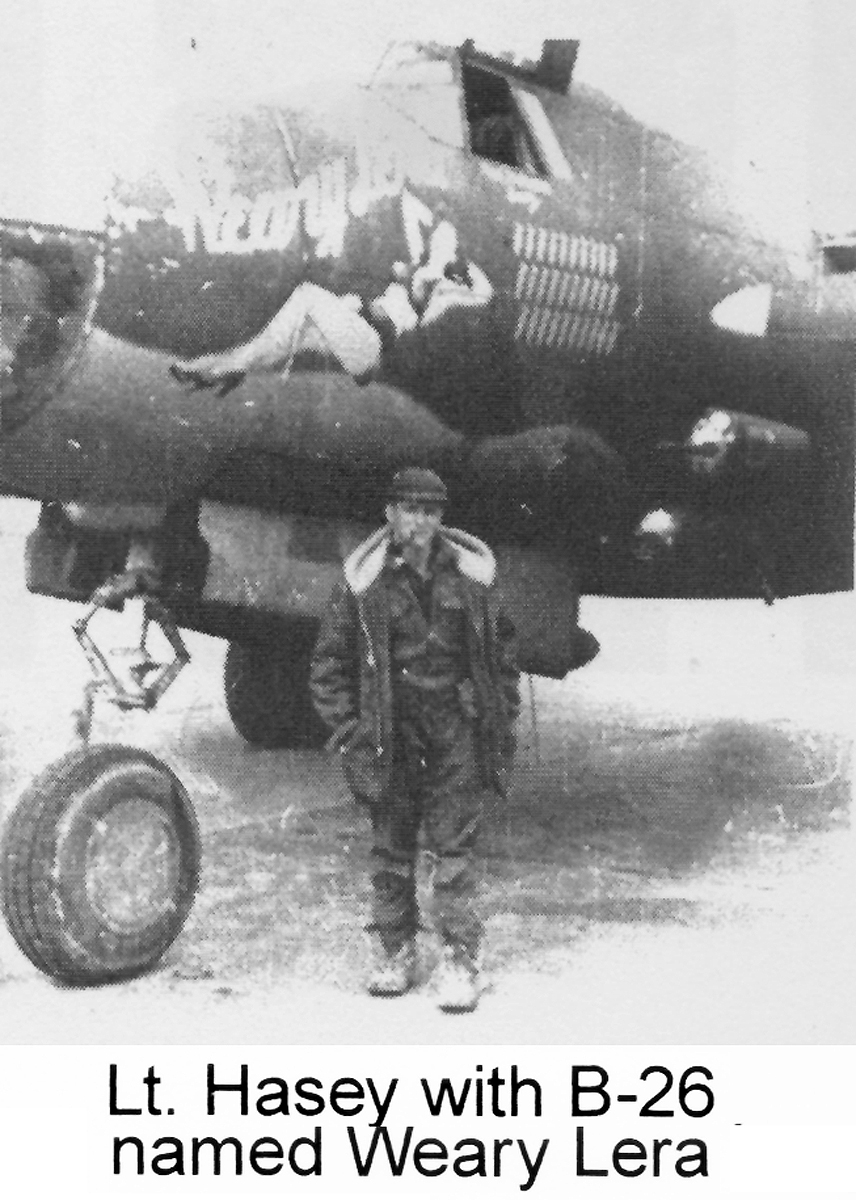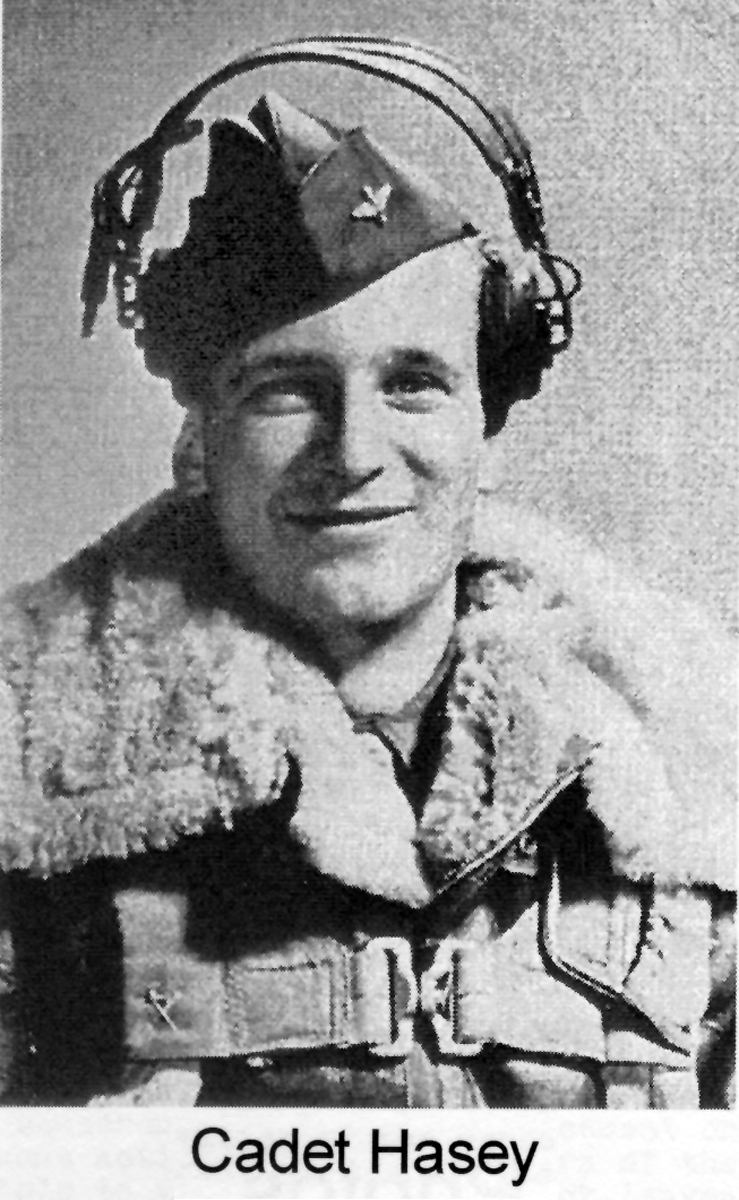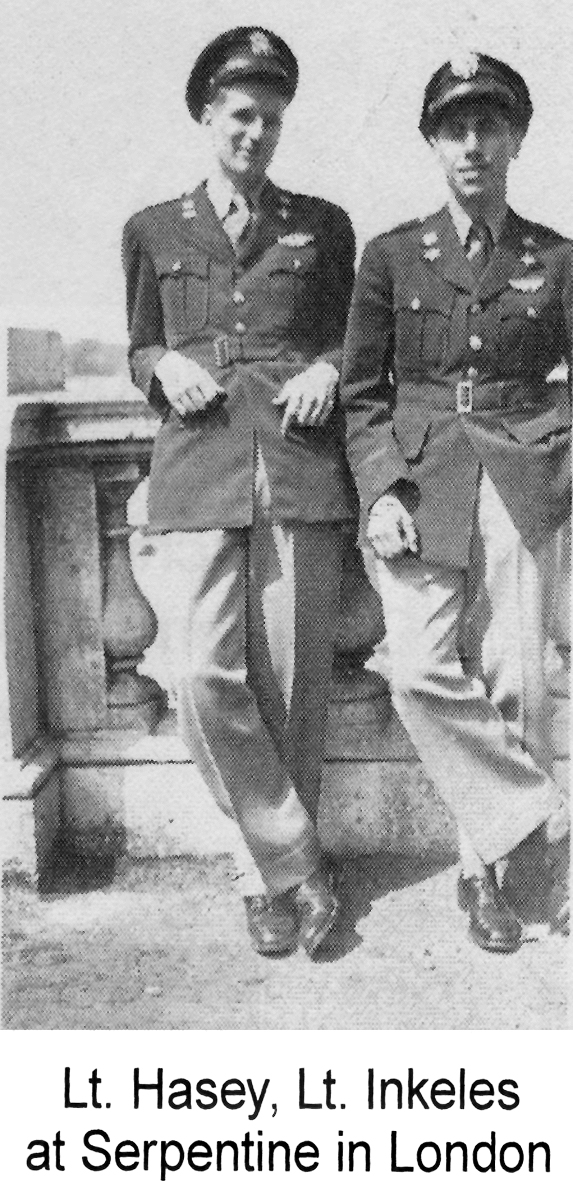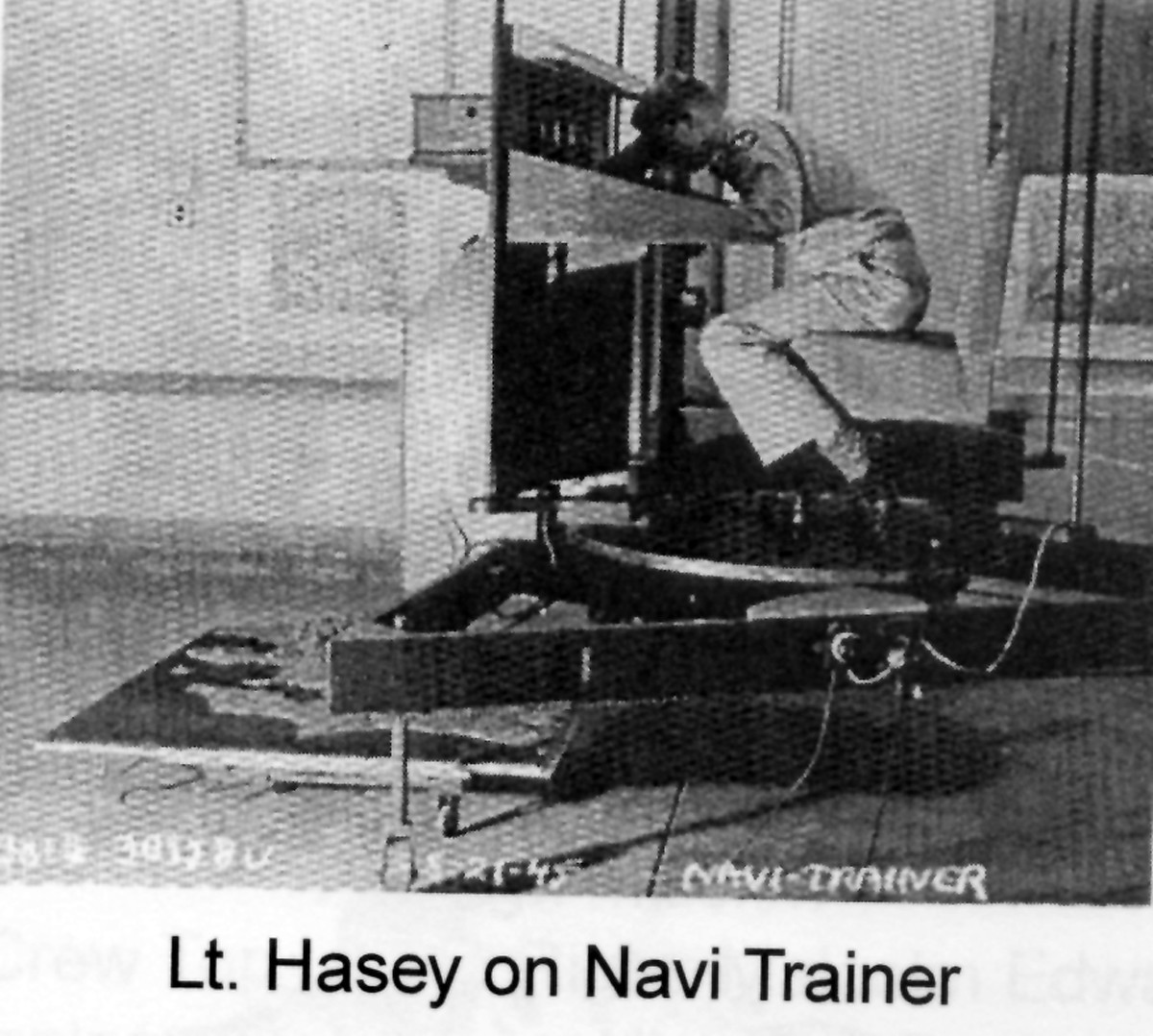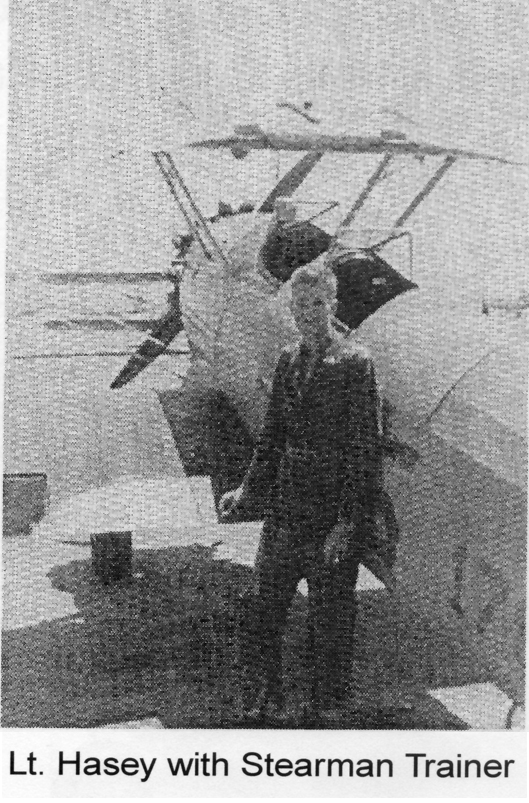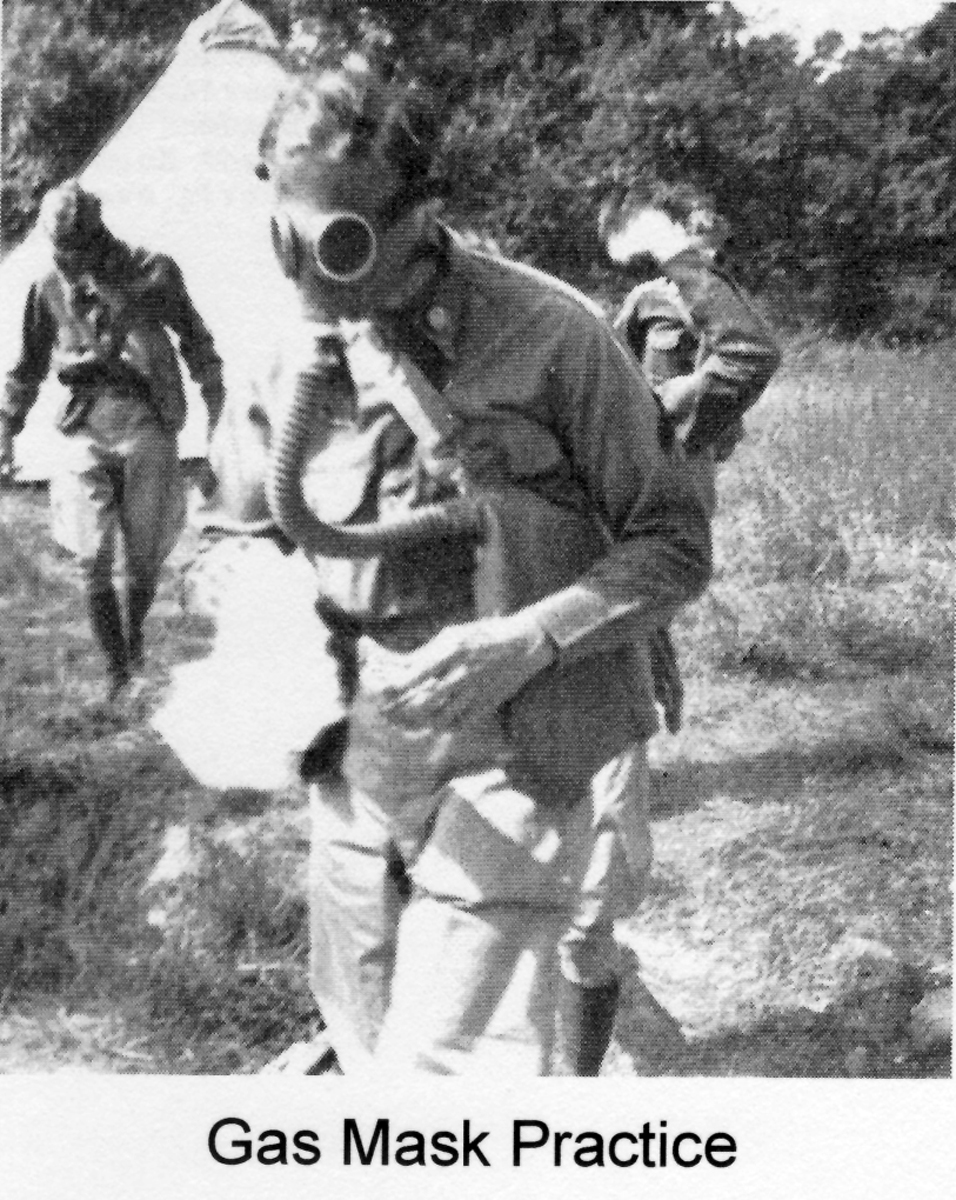Lt. Casey Hasey’s 1st Bombing Mission
The following is an excerpt from Casey Hasey’s book entitled My Bombsight View of WWII pp110-113. It is available from Amazon. I have added some pictures from the same book. I have colorized his portrait and added some archival records of this first mission.
Click any image to enlarge.
Chapter 25 pp110-113
The Wild Blue Yonder
“I flew my first combat mission of my first nine missions
on a B-26 called “Nick’s Chick” (495th BS 42-95918 Nick’s Chick II ).
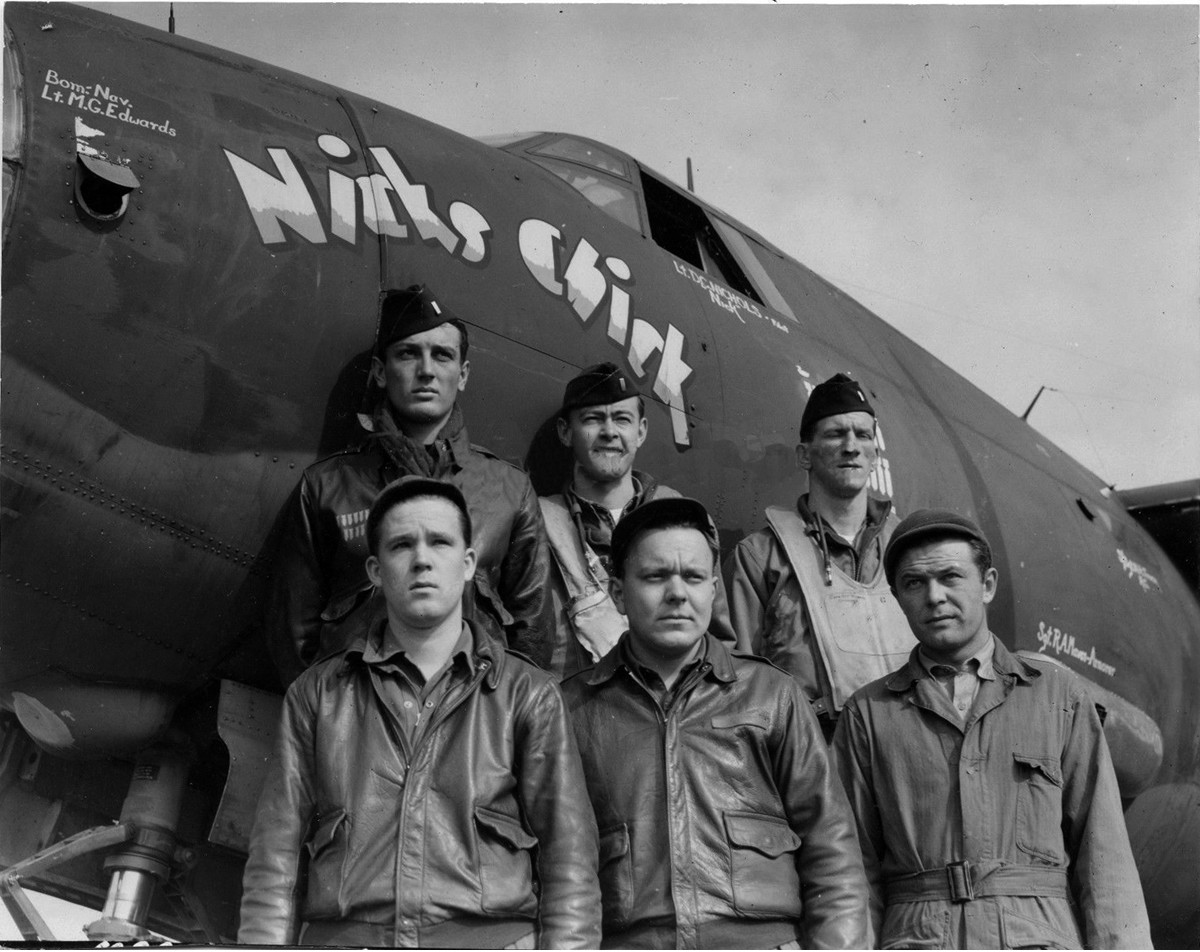
Back L to R: Malcolm Edwards (Casey’s replacement), Dave Nichols, “Pop” Warner. Front: Ed Dollahan, Otto Lemke, Norman Truax
It was the 6th of March, in 1944. We bicycled over to Briefing .
As usual , we got our weather and navigation , and
the primary and secondary targets. We never knew
what the target would be until they pulled back the
sheet covering the wall screen . Only then could
we venture a private guess as to the degree of the
danger for us.
.
Our plane was loaded with 1,000-pound bombs. We
took off and climbed, and then got in formation, and
headed for German-occupied France. The view was great
from my seat in the nose. The Germans had their regular
ack-ack batteries, but they also supplemented them by
moving train-and barge-mounted batteries back and forth.
They had plugged up the entry point we had been using.
Bomber Command had to find a new point of entry for us,
hopefully, just out of range of their great ack-ack batteries.
Sometimes it worked. You never knew from day to day. If
our navigation was precise and we were lucky, they wouldn’t
be able to almost hit us from either side. It was a nice day
with only a few small clouds. I could see the French coast
coming up, and a small village. Pretty soon, we would get
the call to come back to base and we would have another
duck to paint on our nose.
.
Suddenly I just knew. This time no call to return was
coming. This was really it. Could we really cross the coastline
into occupied France without being shot up or shot
down? I wondered if I should have accepted that Naval
Intelligence Officer job instead. How many of us would
survive? I had confidence that they could not get me, even
if I had to parachute. But what would happen to the others?
I felt fear for the first time, and my mind seemed to be in
limbo, but without panic. Fear of the unknown. Quickly we
were in range of their shells , and then we were over the
coast, and no shells were greeting us. Training routines
took over, and my mind returned to the job of following our
course , which was laid out in legs to the target.
.
According to official records , the target on March 6th
was the airfield at Bernay St. Martin, France. The airfield
came up just like in the photos, and I zeroed in on it with
the Norden bombsight. That caused a needle to move in
the cockpit, and the pilot followed the needle during at
least a five to nine minute straight and level bomb run.
When the drift was killed and the cross hairs in the Norden
bombsight matched, I dropped the bombs, and it was a
pretty string of hits. Since we were not the lead crew this
mission, we followed the lead crews procedures.
I could follow the bombs by bending way over in the
Plexiglas window in the nose to where I could see back
underneath the plane, because we were past the target
by the time the bombs landed. To fly a straight line on a
bombing run to the target, it was necessary to crab the
plane into the wind, which in this case was correcting to
the right. I challenge anyone to look at the bombs falling,
and to predict where they will hit. At first they looked like
they certainly would hit a mile or two to the right of the
target, right in some farmer’s barnyard. Then slowly they
would veer more and more in an arc. When they got close
to the ground they sort of blended in until suddenly they
were exploding right where they should. Crabbing into
the wind created an illusion, but the Norden bombsight
tolerated no illusions.
.
The crew back at base painted our first bomb on our
plane with great pride. When you did not get any holes in
your plane, it was called a milk run. Bomber command, in
its wisdom, had given us a milk run for our first mission.
We were grateful but not deluded into thinking the rest
would also be milk runs.
.
I have never again experienced the feeling I had on that
first penetration into the enemy’s territory. It was fear of the
unknown, and my mind going blank. I would, of course,
have times of apprehension and anxiety. We all knew that
this war was necessary, and it was the right and proper
thing to do. Our crew members became welded into a 6
or 7-man machine, and our entire group was dedicated
t0 make Hitlerism disappear from the face of the earth.
Gambling with your life, together with your crew, was an
incredible feeling, Like no other before or since. Everyone in
the crew felt responsible for everyone else. My brain
was stimulated to a higher level. My mind became clearer
and more rational, calculating, and logical. No other experience
has ever come close to equaling it. I felt this way
in all of my missions. Perhaps it’s because of the warrior
genes handed down to us from days gone by. As far as
could tell, all the crew members had similar reactions.
Never did I hear any screams or words of panic on the
intercom, not even when planes were exploding and falling
out of the sky. Only calm crisp commands and responses.
It was very quiet when the ack-ack burst all around and
put holes in the plane and bounced us all over the sky. But
I did have a very very strong hope for it to quit right now,
and I meant right now, this instant.”
.
